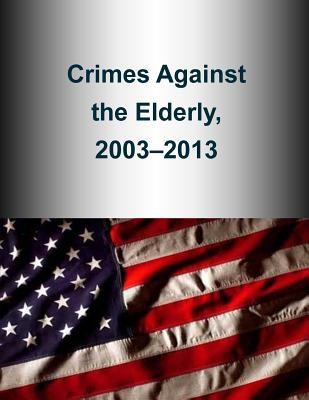
- We will send in 10–14 business days.
- Author: U S Department of Justice
- Publisher: CreateSpace Independent Publishing Platform
- Year: 2015
- Pages: 26
- ISBN-10: 1507523734
- ISBN-13: 9781507523735
- Format: 21.6 x 28 x 0.1 cm, minkšti viršeliai
- Language: English
- SAVE -10% with code: EXTRA
Reviews
Description
This report describes crimes against persons age 65 or older, by victim and incident characteristics. Data are from the National Crime Victimization Survey (NCVS), the Centers for Disease Control and Prevention's (CDC) Web-based InjuryStatistics Query and Reporting System (WISQARS), and the U.S. Census Bureau. In 2003-13- The rates of nonfatal violent crime (3.6 per 1,000 persons) and property crime (72 3 per 1,000) against elderly persons were lower than those of younger persons. The ratio of the estimates of property crime to violent crime was higher for the elderly (13 to 1) than for younger persons ages 25 to 49 (3 to 1) and persons ages 50 to 64 (5 to 1). Elderly homicide rates declined 44%, from 3.7 homicides per 100,000 persons in 1993 to 2.1 per 100,000 in 2011. Persons age 65 or older experienced more incidents of identity theft (5.0%) than persons ages 16 to 24 (3.8%), but less than persons ages 25 to 49 (7.9%) and ages 50 to 64 (7.8%). Among elderly violent crime victims, about 59% reported being victimized at or near their home. A smaller percentage of elderly victims (18%) suffered an injury during the incident, compared to victims ages 12 to 24 (30%) and ages 25 to 49 (25%). The elderly (56%) reported incidents of violent crime to police more than persons ages 12 to 24 (38%). No differences were detected with the elderly and other age groups. About 11% of elderly victims of violent crime received assistance from victim service agencies.
EXTRA 10 % discount with code: EXTRA
The promotion ends in 21d.16:56:14
The discount code is valid when purchasing from 10 €. Discounts do not stack.
- Author: U S Department of Justice
- Publisher: CreateSpace Independent Publishing Platform
- Year: 2015
- Pages: 26
- ISBN-10: 1507523734
- ISBN-13: 9781507523735
- Format: 21.6 x 28 x 0.1 cm, minkšti viršeliai
- Language: English English
This report describes crimes against persons age 65 or older, by victim and incident characteristics. Data are from the National Crime Victimization Survey (NCVS), the Centers for Disease Control and Prevention's (CDC) Web-based InjuryStatistics Query and Reporting System (WISQARS), and the U.S. Census Bureau. In 2003-13- The rates of nonfatal violent crime (3.6 per 1,000 persons) and property crime (72 3 per 1,000) against elderly persons were lower than those of younger persons. The ratio of the estimates of property crime to violent crime was higher for the elderly (13 to 1) than for younger persons ages 25 to 49 (3 to 1) and persons ages 50 to 64 (5 to 1). Elderly homicide rates declined 44%, from 3.7 homicides per 100,000 persons in 1993 to 2.1 per 100,000 in 2011. Persons age 65 or older experienced more incidents of identity theft (5.0%) than persons ages 16 to 24 (3.8%), but less than persons ages 25 to 49 (7.9%) and ages 50 to 64 (7.8%). Among elderly violent crime victims, about 59% reported being victimized at or near their home. A smaller percentage of elderly victims (18%) suffered an injury during the incident, compared to victims ages 12 to 24 (30%) and ages 25 to 49 (25%). The elderly (56%) reported incidents of violent crime to police more than persons ages 12 to 24 (38%). No differences were detected with the elderly and other age groups. About 11% of elderly victims of violent crime received assistance from victim service agencies.


Reviews